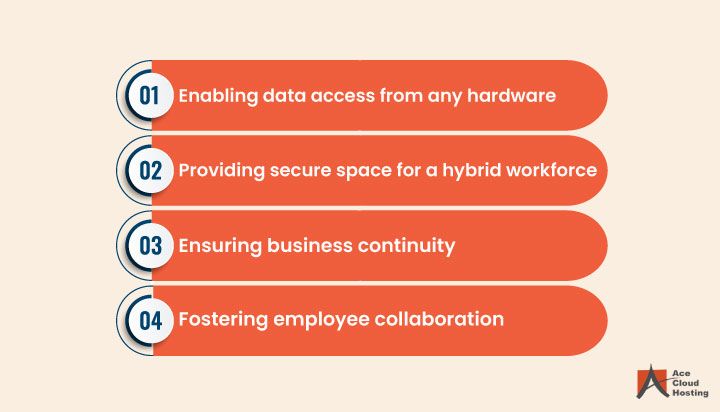Virtualization technology has transformed IT infrastructure and enabled organizations to achieve greater flexibility, scalability, and efficiency. One of the key benefits of virtualization is enhanced disaster recovery capabilities. Virtualization abstracts compute, storage, and network resources into software-based virtual resources, allowing workloads to be easily moved between physical servers. This provides significant advantages for disaster recovery and business continuity.
Faster Recovery Times
With traditional physical servers, recovering from a disaster event like hardware failure or data corruption is difficult and time-consuming. It requires procuring new hardware, reinstalling operating systems and applications, and restoring data from backups. This process can take days or weeks, during which business operations are significantly disrupted or halted entirely.
Virtualization enables much faster recovery times. Virtual machines (VMs) encapsulate entire workloads, including operating systems, applications, and data. VMs can be instantly restored or migrated to alternate servers in the event of a disaster. This minimizes downtime and accelerates restoration of normal operations.
Improved RTO and RPO
Two key disaster recovery metrics are:
- Recovery Time Objective (RTO) – The time to recover and restore operations after a disruption
- Recovery Point Objective (RPO) – The maximum acceptable amount of data loss during recovery
Virtualization improves both RTO and RPO. VMs can be restored or failed over rapidly, often in minutes rather than hours or days. Data loss is minimized since VMs encapsulate full application stacks and virtual storage volumes.
Cost-Effective Replication and Backup
Protecting traditional physical servers requires complex SAN-based replication and expensive backup agents on each server. Virtual infrastructure simplifies this by enabling shared storage arrays and agentless VM backups.
Storage arrays like Dell EMC VNX and NetApp ONTAP support native replication of VM storage volumes, eliminating the need for host-based replication agents. Backup tools like Veeam leverage hypervisor APIs to directly backup VMs without agents. This reduces licensing costs and administrative overhead.
Simplified Testing and Failover
Validating recovery plans through tests and fire drills is essential for maintaining disaster readiness. Virtualization streamlines testing by allowing replication and failover to isolated environments without disrupting production systems.
Tools like VMware vSphere and Microsoft Hyper-V provide sandbox environments for non-disruptive recovery testing. VMs can also be failed over between locations for scheduled tests to validate recovery procedures. This flexibility improves testing thoroughness and frequency.
Centralized Management and Automation
Managing disaster recovery for physical infrastructure involves complex coordination across multiple systems and locations. Virtualization provides centralized visibility and control through hypervisor and management consoles.
Products like VMware vCenter and Microsoft SCVMM enable administrators to easily monitor infrastructure health, view relationships between VMs/storage, and automate failover workflows. This reduces human error during disasters and outage situations.
Key Capabilities
Here are some specific virtualization capabilities that enhance disaster recovery:
- Live Migration – Move running VMs between physical hosts without disruption
- Storage Migration – Move VM files between storage devices/arrays
- Cross-Hypervisor Conversion – Convert VMs between formats (e.g. VMware to Hyper-V)
- Instant VM Recovery – Restore a VM directly from backup storage
- Replication – Mirror VMs and data to remote sites for redundancy
- Orchestration – Automate failover and disaster recovery workflows
Avoiding Vendor Lock-In
Proprietary virtualization platforms can create vendor lock-in situations that impede disaster recovery flexibility. For example, an organization using VMware vSphere may be unable to failover to a secondary site with Hyper-V hosts.
Platforms like Red Hat Virtualization and Nutanix AHV provide open virtualization technologies that avoid lock-in. Workloads can be migrated across heterogeneous environments using standard formats like OVF and XVA.
Multi-hypervisor management tools like HotLink SuperVISOR also facilitate cross-platform visibility, migration, and high availability. This provides maximum flexibility for disaster recovery.
Challenges and Considerations
While virtualization enables more robust and efficient disaster recovery, it also introduces new complexities and requirements:
- Additional storage is needed for VM files and replication
- Network infrastructure must be sized to support traffic during migrations
- Orchestration and automation capabilities add learning curves
- Testing failover procedures end-to-end is mandatory
- Site redundancy and alternate locations are still required
Organizations also face decisions regarding local vs. remote replication, shared vs. dedicated recovery sites, and the use of cloud and disaster recovery as a service (DRaaS) offerings.
A holistic disaster recovery strategy is necessary to maximize the advantages of virtualization. This includes aligned policies, robust processes, and regular validation.
Use Cases and Examples
Here are some examples of how virtualization improves disaster recovery across various applications and industries:
Virtual Desktop Infrastructure (VDI)
VDI provides centralized desktop images streamed to endpoints over a network. Virtual desktops can be rapidly restored or failed over if a data center outage occurs. Users regain desktop access quickly from alternate locations.
Virtualized ERP Systems
Mission-critical ERP systems like SAP, Oracle, and Microsoft Dynamics can be made highly available using VM replication and failover. The entire ERP stack is encapsulated for easy portability between sites.
Virtualized Call Centers
Call center applications rely on fast disaster recovery to ensure continuity of customer service. Telephony systems and agent desktops can utilize live migration to shift operations across sites in an outage.
Cloud Computing
Public clouds provide native disaster recovery capabilities by replicating VMs across fault domains and availability zones. Cloud DRaaS offerings like Azure Site Recovery also support on-premises to cloud failover.
Virtualized Data Centers
Heavily virtualized data centers achieve “zero RTO” disaster recovery. With shared storage and live migration, VMs can be automatically failed over during outages to minimize disruption.
Conclusion
Virtualization is a foundational technology for modern disaster recovery. Key capabilities like portability, replication, and orchestration enable rapid workload recovery after outages. This prevents extended downtime and data loss while restoring normal operations quickly.
However, virtualization also introduces new complexity. Comprehensive disaster recovery strategies must still be developed encompassing policies, procedures, infrastructure, and testing. When implemented effectively, organizations can leverage virtualization to achieve robust, cost-efficient disaster recovery.
